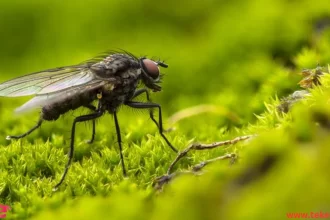The Amazonian weasel is a member of the mustelid family and the genus Mustela, is a mammal found in the Amazon.
Let’s learn more about it from teketrek.
Facts about The Amazonian weasel
It prefers to inhabit areas near rivers.
This species is one of the largest of its kind in South America, reaching lengths of up to 50 cm.
Resembling a rat in shape, the Amazonian weasel has a small and distinctive appearance.
Additionally, it is distributed worldwide and does not inhabit a single location.
The Amazonian weasel is characterized by several features and qualities that distinguish it from others
It has short whiskers and almost hairless foot pads, with females having three pairs of nipples.
The body of the Amazonian weasel helps it adapt to moving through dense vegetation in rainforest areas.
Its short legs and flexible frame enhance agility, allowing effective movement through the complex maze of Amazon shrubs.
Its earthy fur color provides effective camouflage in the dim sunlight that filters through the rainforest canopy.
It often blends seamlessly with the surrounding environment for hunting and avoiding potential predators.
The Amazonian weasel is nocturnal, active at night to search for food, enabling it to hide from predators.
It generally lives solitarily but occasional observations suggest some social interactions, especially during mating season when communication is facilitated through vocalizations, scent markings, and body language

The Amazonian weasel specification
The Head: The Amazonian weasel has a flat head.
The Neck: somewhat long neck.
The Body: cylindrical and long body
The Limbs: all its limbs are short.
The Tail: It also features a very slender tail.
The length: Its length ranges from about 43 cm to 50 cm, with the tail measuring from 16 cm to 20 cm.
The Toes: the weasel is having five toes, unlike other animals with fewer toes, each ending in sharp, curved claws.
The Color: Its body is covered in very short and not dense fur, ranging in color from reddish to dark brown on the upper part of the body and pale orange on the lower parts.
Habitat and distribution of the Amazonian weasel
The Amazonian weasel can be found in South America, specifically in Ecuador, Bolivia, Brazil, and Peru.
It is known to inhabit the Amazon Basin in northern Brazil, western Peru, and Ecuador.
It may also reside in southern Colombia, Venezuela, Guyana, as well as northern Bolivia, preferring tropical rainforests.
Understanding the Brown Recluse Spider: Nature’s Silent Hunter
Amazonian Weasel Diet
The Amazonian weasel uses all its senses to locate prey. Due to its low body position, it often searches underneath objects and is classified as a carnivorous animal.
They are able to carry their prey, likely meaning they take it back to their den. The Amazonian weasel is a small predatory animal and usually hunts smaller prey including rabbits, squirrels, rats, and field mice.
Furthermore, they also feed on rodents and other small mammals, and have been reported to make burrows in hollow tree trunks.
The Fascinating World of Glass Frogs: Nature’s Transparent Wonder
Reproduction in the Amazonian Weasel
Amazonian weasels are often sexually dimorphic, meaning that males are larger than females. Mating behavior includes some complex courtship rituals and vocalizations.
Pair bonds between males and females are temporary, only during the mating season. After mating, females provide care and protection for their young, with shared parental responsibilities during the early stages of offspring growth.
Additionally, the secluded and hidden nature of their dens contributes to protecting and caring for young Amazonian weasels within the rainforest environment.

FAQs about the Amazonian weasel
What are the threats facing the Amazonian weasel?
One of the main threats to Amazonian weasels is habitat destruction, deforestation, and agricultural expansion, as rainforests face increasing pressure from human activities.
What is the lifespan of an Amazonian weasel?
Amazonian weasels have a short lifespan, living up to three years in the wild.
What is the digestive system of the Amazonian weasel composed of?
The Amazonian weasel has a digestive system capable of efficiently swallowing and digesting food. It consists of the mouth, esophagus, stomach, intestines, and a lower jawbone with 34 teeth. Its digestive tract contains several glands that aid in food digestion, including salivary glands, gastric glands, intestinal glands, pancreatic glands, and hepatic glands.
Is the Amazon weasel endangered?
The few available records suggest that it is naturally rare and it is assumed that the destruction of their habitat could compromise even more strongly the survival of the species. The species is classified by IBAMA as threatened with extinction.
Are Amazon weasels aggressive?
Despite their small size, Amazon weasels can be quite aggressive. However, they generally avoid human contact.
- Are Amazon weasels friendly to humans?
Amazon weasels are not typically dangerous to humans and usually steer clear of human interaction. In conclusion, it is important to emphasize the role of the Amazonian weasel in maintaining ecological balance by feeding on various mammals and animals, reducing their population pressure in the rainforests.
References:
Wikipedia





